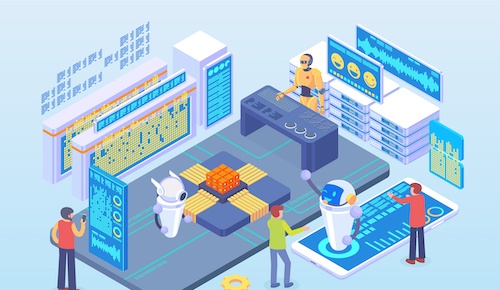How we are rolling our own AI Language Model

Here is an overview of how we are training our own AI language model.
This is to give you an idea of the work involved and to show it's possible to train your own language model. This isn't just for the big guys. Anyone with the right know-how and some resources can start training their own language model.
-
Collect training data: The first step is to collect a large amount of text data that will be used to train your language model. You can scrape text from websites, use public datasets, or even use your own personal collection of documents.
-
Clean and preprocess data: Once you have collected your data, you will need to clean and preprocess it to remove any irrelevant information, such as HTML tags or metadata. You may also want to tokenize your data into individual words or phrases, and perform other preprocessing steps such as stemming, lemmatization, and stopword removal.
-
Choose a framework: There are several frameworks available for building language models, such as TensorFlow, PyTorch, and Keras. Choose one that you are comfortable with or that fits your budget.
-
Define your model architecture: Next, you will need to define your language model architecture. This includes choosing the number and type of layers, the activation functions, and the number of neurons in each layer.
-
Train your model: Once you have defined your architecture, you can train your model on your preprocessed data. You will need to choose a loss function and optimizer, and specify how many epochs (training iterations) you want to run.
-
Evaluate your model: After training, you will need to evaluate your model to see how well it performs on unseen data. You can do this by testing it on a validation set or using cross-validation.
-
Fine-tune your model: Based on the results of your evaluation, you may want to fine-tune your model by adjusting your architecture, changing hyperparameters, or collecting more training data.
-
Deploy your model: Once you are satisfied with your model's performance, you can deploy it for use in your application or share it with others.
Out of all of these steps, the most important is collecting the training data.
Below are some examples of ways to collect this data. I think the most interesting would be with a social network type of app. Anything you could build that would generate real user content will be extremely useful.
There are several possible ways to collect training data for a language model, including:
-
Web scraping: You can scrape text data from websites using tools like BeautifulSoup or Scrapy. This is a great way to collect a large amount of text data quickly, but be sure to follow ethical web scraping practices and respect websites' terms of service.
-
Public datasets: There are several public datasets available for natural language processing tasks, such as the Wikipedia dump, the Common Crawl dataset, or the OpenSubtitles corpus. These datasets are often preprocessed and cleaned, making them easier to work with.
-
User-generated content: You can also collect text data from user-generated content, such as social media posts, forum discussions, or product reviews. This can be a great way to collect data that reflects real-world language usage, but be sure to obtain permission from users and follow ethical data collection practices.
-
Personal collection: You can use your own personal collection of text data, such as emails, blog posts, or documents. This can be a great way to create a language model that is tailored to your own language style and domain-specific vocabulary.
-
Collaborative data collection: You can also collaborate with others to collect text data. For example, you can create a shared corpus where multiple people contribute text data from their own sources.
Regardless of how you collect your training data, it's important to make sure it is representative of the language and domain you want your language model to operate in. It's also important to follow ethical data collection practices and respect users' privacy and intellectual property rights.
Costs associated with setting up your own language model (AI)
The cost of setting up your own language model depends on a few factors. These include the size of the training data, the complexity of the model architecture, the hardware and software. Here are some cost factors:
-
Collecting training data: The cost of collecting training data can vary widely depending on the source and size of the data. Public datasets are usually free, but web scraping or user-generated content may require time and resources to obtain. Personal collections are usually free, but may require time to organize and clean. Collaborative data collection may also require time and coordination, but can be done without additional costs.
-
Preprocessing data: Preprocessing the data can be done with free and open-source software like Python and NLTK library.
-
Framework: There are several frameworks available for building language models, such as TensorFlow, PyTorch, and Keras, which are open-source and free to use.
-
Hardware: The cost of hardware will depend on the size of your training data and the complexity of your model architecture. For a small-scale project, you can use a standard laptop or desktop computer. For larger projects, you may need to use cloud-based services like Amazon Web Services or Google Cloud Platform, which can be cost-effective, but prices vary depending on the resources used.
-
Time and expertise: Developing and training a language model requires time and expertise in natural language processing, machine learning, and software development. If you have these skills, you can do it yourself, otherwise, you may need to hire a developer or consultant which can increase the cost.
Overall, you will need a team of talented coders to help set this up as well as for consultation.


